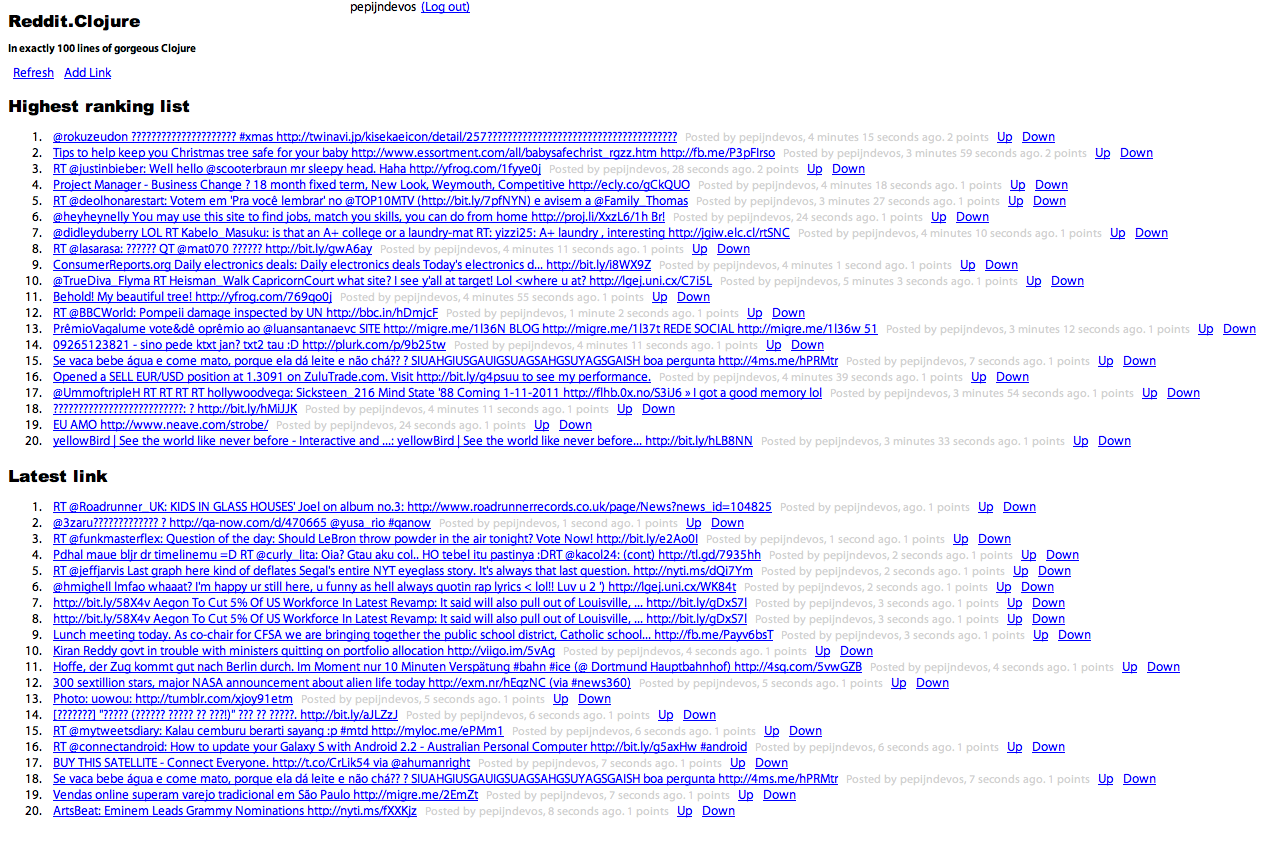- Clients
- Analytics
- Aggregation
- And... a clone? Sure!



user=> (count (ns-publics 'clojure.core)) 546
That are a lot of functions. Unless you wrote half of them I wager you don’t know them all. Don’t worry, neither do I. But it doesn’t hurt to learn some more. That is why I wrote a Clojure quiz.
Simply do the standard stuff(make sure you have git and lein or cake)
git clone git://github.com/pepijndevos/clojure-quiz.git cake deps cake repl (use 'clojure-quiz.core)
Now you can play three types of quizzes.
(name-quiz) is by far the hardest, and I generally score around 70% while I can usually get 100% on the others.
You can tweak the quiz by using binding to set the namespace to use and the number of options to give:
(binding [target 'clojure.set number 5] (doc-quiz))
Have fun!
This snippet gets tweets, filters their links, sorts, resolves and counts them in about 30 lines Clojure, showing off the power of its Java interoperability and concurrent data structures.
(ns news
(:refer-clojure :exclude [resolve])
(:use clojure.contrib.json)
(:import [java.io BufferedReader InputStreamReader]
[java.net URL]))
(def cred "") ; username:password
(def json (let [con (.openConnection (URL. "http://stream.twitter.com/1/statuses/sample.json"))]
(.setRequestProperty con "Authorization" (str "Basic "
(.encode (sun.misc.BASE64Encoder.) (.getBytes cred))))
(BufferedReader. (InputStreamReader. (.getInputStream con)))))
(def urls (agent (list)))
(def resolve (memoize (fn [url]
(try
(let [con (doto (.openConnection (URL. url))
(.setInstanceFollowRedirects false)
(.connect))
loc (.getHeaderField con "Location")]
(.close (.getInputStream con))
(if loc loc url))
(catch Exception _ url)))))
(defn top [urls]
(reduce #(if (> (val %1) (val %2))
%1 %2)
(frequencies @urls)))
(future (doseq [tweet (repeatedly #(read-json json))
url (:urls (:entities tweet))]
(send-off urls #(conj % (resolve (:url url))))))
And this is just the start. I want to see if I can use Aleph and ClojureQL to kickstart my own little news service with it.
